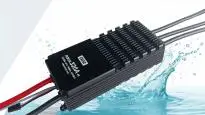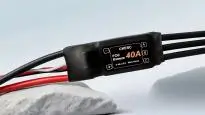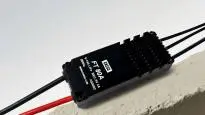When it comes to drones, many people immediately think of sleek designs and high-definition cameras, but few notice that.——The propeller is the core component that determines whether a drone flies steadily and travels far.Whether it's aerial photography, FPV racing, or cargo operations, choosing the right propeller directly impacts your flight experience. This article breaks down drone propellers from principles and types to scenario-based selection and model interpretation, helping you fully understand them.
I. The Core Principle of Propellers: How Do Drones Fly?
Thrust Generation: Newton's Third Law
As the propeller rotates, it squeezes air downward like a “fan,” creating a downward airflow. According to the principle of “action and reaction,” the compressed air exerts an upward reaction force on the propeller. This force isthrustWhen thrust exceeds the drone's weight, it ascends; when thrust equals weight, it hovers; when thrust is less than weight, it descends.
- Key Factors Affecting Thrust
- Rotational speedThe faster the rotational speed, the greater the volume of air compressed per unit time, resulting in increased thrust (though excessively high speeds will increase noise and energy consumption).
- Paddle angle (pitch)The angle at which the blades are tilted is called the “pitch.” A larger pitch means more air is pushed per revolution, resulting in greater thrust (but also increasing the load on the motor).
- Paddle diameterThe larger the diameter, the wider the air coverage and the stronger the thrust foundation (though excessive diameter may cause frame stuttering).
II. Primary Types of Drone Propellers: Classification by Three Dimensions
Propellers on the market may appear diverse, but they can be categorized based on three core dimensions: “material,” “number of blades,” and “pitch characteristics.” The distinct features of each type are readily apparent.
1. By Material
ABS plastic paddle
- Low cost, impact-resistant, easy to replace, slightly heavier
Suitable for: Beginner practice, entry-level drones
PC plastic paddle
- Lighter than ABS, with superior toughness and impact resistance
Suitable for: Advanced aerial photography, light-duty FPV racing drones
Carbon Fiber Paddle
- Extremely lightweight, high strength, high efficiency, high cost
Suitable for: Professional FPV racing drones, cargo drones, and users seeking extended flight time
2. By Number of Paddle Blades
2. Leaf Paddle
- Simple structure, low air resistance, highest efficiency
3-blade / 4-blade propeller
- Greater stability and increased thrust, with slightly higher drag
Multi-bladed paddle (5 blades or more)
- High thrust, excellent hover stability, high energy consumption
3. By Pitch Characteristics
Fixed-pitch propeller
- The pitch is non-adjustable, featuring a simple structure and low cost.
Variable Pitch Propeller
- Pitch can be adjusted in real time, enabling more precise thrust control, with a complex structure.
III. How to Read Propeller Models? Just 3 Numbers Are Enough
1. First two digits: Paddle diameter (unit: inches)
For example, the “10” in “1045” indicates that the propeller blade diameter is 10 inches (1 inch ≈ 2.54 cm). A larger diameter generates greater thrust but requires a higher-power motor to match.
2. Last two digits: Pitch (unit: inches)
For example, the “45” in “1045” indicates a pitch of 4.5 inches. A larger pitch delivers stronger thrust but also places greater load on the motor (beginners are advised to start with lower-pitch propellers, such as ‘1040’ or “9450”).
3. Last two digits: Pitch (unit: inches)
- CW: Clockwise, rotating in a clockwise direction;
- CCW: Counterclockwise rotation.
Drones require pairs of clockwise (CW) and counterclockwise (CCW) propellers (typically 2 CW + 2 CCW) to counteract rotational torque and prevent the airframe from spinning.
Conclusion: There is no “best” paddle—only the “best fit.”
Propellers are not about “the more expensive, the better,” but rather “the better suited to your needs.” Beginners can start with entry-level ABS propellers, then upgrade materials or blade counts based on flight scenarios after gaining familiarity. For professional applications (such as FPV racing or cargo drones), carbon fiber propellers are recommended to prioritize flight safety and avoid compromises due to inadequate blade performance.
Finally, remember: When replacing the propeller, always verify that the model and rotation direction match. Tighten securely during installation, but avoid excessive force to prevent blade deformation or motor damage.




